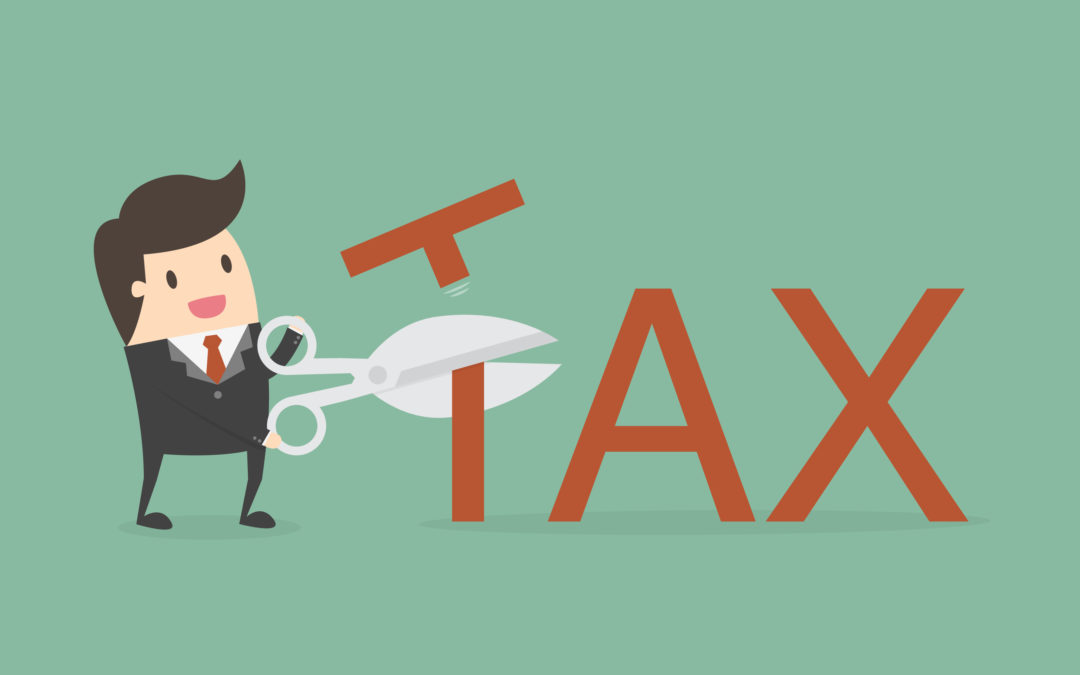A Simplified Employee Pension or SEP plan lets small business owners make tax-free contributions toward their employees’ retirement account, but SEP IRA accounts can also offer significant tax savings on income. A Simplified Employee Pension or SEP plan lets small business owners make contributions free of tax toward their employees’ retirement plan, but SEP IRA accounts can also offer significant tax savings on income.
If you’re self-employed, running a small business, or making money aside from regular income at work, a SEP IRA contributions can help you increase your tax-deferred retirement savings. Reducing your tax bill and maxing out your contributions every year can help you build a larger nest egg by the time you retire.
What are the Key Benefits of SEP?
Look at some significant advantages of the SEP plan which make it a game changer:-
- Normally less expensive to manage and less cumbersome than other small-business retirement plans, such as 401(k).
- It can be funded until the deadline for filing a tax return for the relevant tax year (with extensions).
- Form 5500 is typically not required to be filed yearly to disclose retirement benefits.
- Availability of tax-deferred retirement funds.
- Every year, the contribution rate may change.
- Even if an employee makes no contributions, the IRA is funded exclusively by employer contributions.
- The retirement funds are always fully vested in the employees.
How Does SEP IRA Reduce Taxes and Boost Your Retirement Savings?
Here’s a brief understanding of how SEP IRA works and how it is different from other retirement plans:-
 Taxes on a Regular 401(k)
Taxes on a Regular 401(k)
Since a SEP IRA is funded with pre-tax dollars, investment income is tax-deferred. Interest, dividends and capital gains from funds held within the retirement account are not included in your annual taxable income, and you only pay taxes on distributions.
With tax-protected reinvestment and compound interest, your retirement fund can grow much larger in the long run. This is especially important when you’re self-employed or don’t have an employer-sponsored pension plan at work.
 Business Expense Deductions
Business Expense Deductions
Contributions to a SEP IRA contributions count as business expenses, which helps to reduce net profit and taxable income for the business:
- For self-employed professionals and business owners contributing to their own SEP IRA, adjusted gross income and federal income tax are lower.
- For self-employed individuals or small business owners contributing to their employees’ SEP IRA, both self-employment tax and income tax are reduced.
- For corporations contributing to employee SEP IRAs, income tax is lower and contributions are exempt from Medicare and Social Security taxes.
 Setup and Funding Dates
Setup and Funding Dates
Unlike a traditional IRA and other retirement plans, an SEP IRA can be adopted and funded after the close of the tax year, right up to the tax return due date and any extensions that apply.
The current year’s business expenses can be included in the previous year’s tax return if needed. This helps you decide how much to contribute based on your current financial condition, as well as spread out contributions over a longer period for more effective budgeting.
How to Establish a SEP IRA?
Establishing a SEP IRA is relatively simple if you believe it is the right choice for your business. These are the steps:-
- Complete the Paperwork
Firstly, complete the necessary formal agreement documents, such as the IRS Form 5035-SEP, or alternative IRS-approved paperwork or individual legal agreement documentation. The paperwork should be kept on file at the company as the official notification for all eligible employees rather than being sent to the IRS. - Disseminate Plan Details to all Eligible Personnel
According to SEP IRA regulations, employers must provide the same percentage contribution of each qualifying employee’s salary. Employees can get the details by giving them a copy of IRS Form 5035-SEP or equivalent documentation that outlines eligibility requirements, contribution amounts, and how to access and manage their accounts. - Pick a SEP IRA Provider & Create Accounts for Each Qualified Employee
Opening separate accounts for you and your staff with a SEP IRA account provider can be beneficial. It’s important to review different providers, as various investment alternatives, price schedules, and account minimums are available. Once you decide on the provider that suits your needs, you can request them to open each account you require.
What to Think About Before Choosing a SEP?
SEP IRA tax deduction and other benefits make it an ideal choice, especially for self-employed and small business owners. However, there are certain aspects that you should keep in mind before going ahead with it. They are:-
- Compare the SEP with other retirement plans for small businesses like 401(k) and SIMPLE plans.
- Determine which employees must be covered by the SEP plan (detailed in Publication 560).
- Compare the effects of each type of plan by speaking with a tax expert for assistance.
- Read Publication 560’s chapter 2. The IRS very clearly explains simplified employee pension schemes in it.
- Examine the financial institutions that handle SEP plan administration. Review their documentation, expenses, and investment opportunities.
- Know the maximum amount you could put into a SEP IRA.
- Read the sample SEP plan (Form 5305-SEP), or other sample plans that the financial institution of your choosing may offer.
- Recognize the influence of donations on your tax calculations and how they will be deducted from your income on the tax return.
- Review the information that must be disclosed to employees (also detailed in Publication 560).
How to Prevent Common SEP IRA Mistakes?
Contribution mistakes may affect the tax deductibility of SEP IRA contributions made on your employees’ behalf, and they may occasionally increase their tax obligations. You may prevent the most typical SEP IRA contribution mistakes by following these steps:
- Make sure that all qualified workers, including those beyond the age of 70 ½, get payments.
- Ensure your plan document is current with the laws in effect.
- When computing contribution amounts, abide by the IRS contribution limits.
- Make sure that each employee has a constant amount of revenue going into their SEP IRA account.
Since SEP IRA reduces self-employment tax and boosts business deductions, it can help small businesses, freelancers, and self-employed professionals lower their tax bills significantly.
Need assistance organizing your finances?
FAQs
Why should I open a SEP IRA rather than a conventional IRA?
Your business and employees, including you, can profit from a SEP IRA. Your firm may normally deduct contributions you make to the individual accounts under your plan. In addition, you can contribute almost ten times as much to a SEP IRA as to a traditional IRA.
Who may make deposits into the account?
You, the employer, are the only one who makes the contribution.
Is it possible to transfer money from a retirement account with a former employer?
Yes. Rolling over your 401(k), 403(b), and 457 plan accounts into a Merrill SEP IRA allows you to combine your retirement savings. Not everyone should use a rollover IRA. Examine your options to see if a Rollover IRA is best for you.
How much does it cost to open up SEP IRA accounts for myself and my employees?
If you have employees, there are no setup or administration costs for your company.
Can money be taken out of a SEP IRA before the age of 59½?
There could be an additional 10% early withdrawal penalty if the initial investment or gains are taken out before turning 59½.
If you are still confused, it’s recommended that you speak to a financial expert. Call Rick now!

Rick Pendykoski is the owner of Self Directed Retirement Plans LLC, a retirement planning company based in Goodyear, AZ. He has over three decades of experience working with investments and retirement planning, and over the last ten years has turned his focus to self-directed ira accounts and alternative investments. If you need help and guidance with traditional or alternative investments, call him today (866) 639-0066.





On turbotax I entered my SEP IRA contribution as the last step of filing. It turned by tax refund into a tax debt losing me almost $1000. Why did that happen?
Hi Lyn, this is not in our wheelhouse to answer.
Rick, if my C-Corp business pays me (the 100% stock holder) a capital gains payout, does that amount count towards my eligible amount for calculating a SEP contribution? For example, $175,000 is considered capital gains and $50,000 is ordinary income. Is the SEP amount based on just the $50,000.
Would appreciate if you actually email me your reply. Many thanks.
I am not a tax expert by any means but I think you are correct – IRA contributions come from “earned” income and Capital Gains is taxed differently than earned income.
If you are a sole proprietor, can you pay yourself an employee, set up a SEP for yourself (as an employee) & take the deduction on your Schedule C to reduce S/E taxes.
Hi Steve, Not a CPA or Tax Attorney, you would want to review this question with a qualified tax preparer. You can definitely create a SEP IRA for your business and contribute in tax deferred fashion to reduce your tax liability.
As a self-employed business owner with no employee, how much can I contribute to my own SEP ira?
Thanks.
Hi Pam, SEP IRAs allow individual annual contribution of as much as $69K per year.